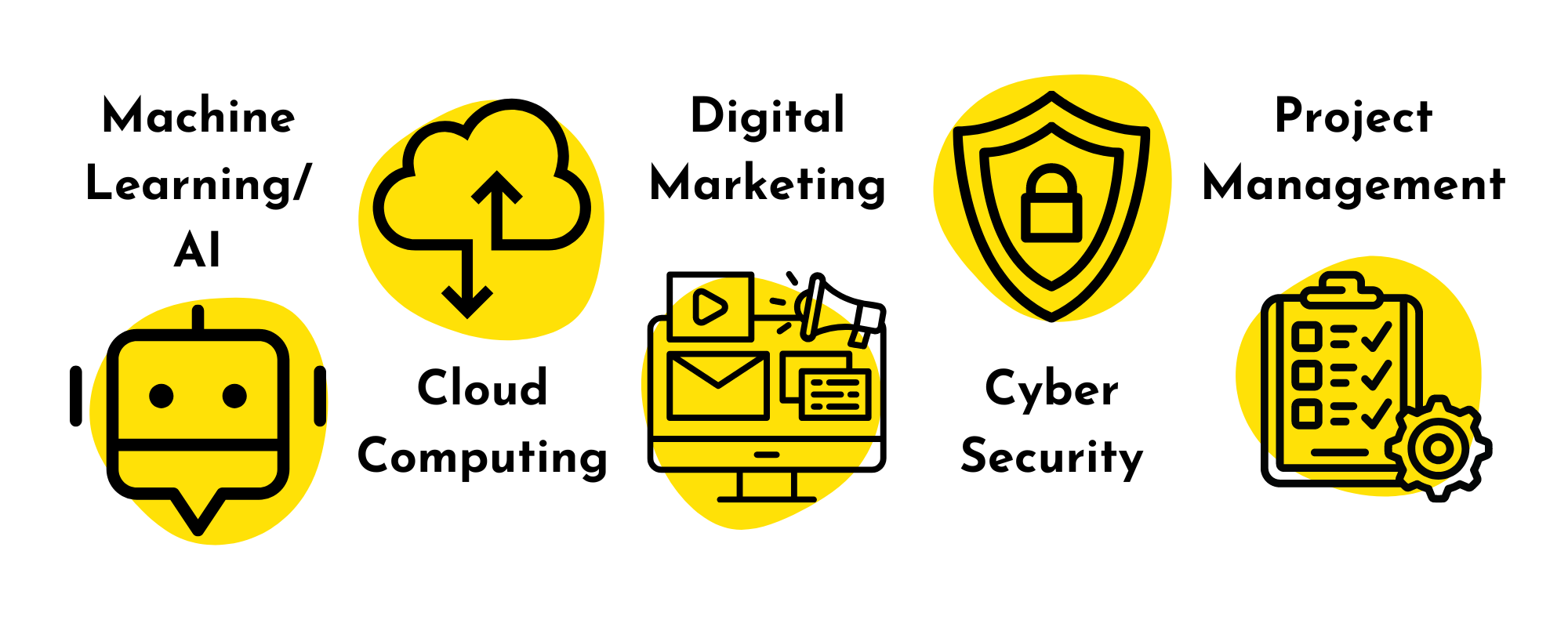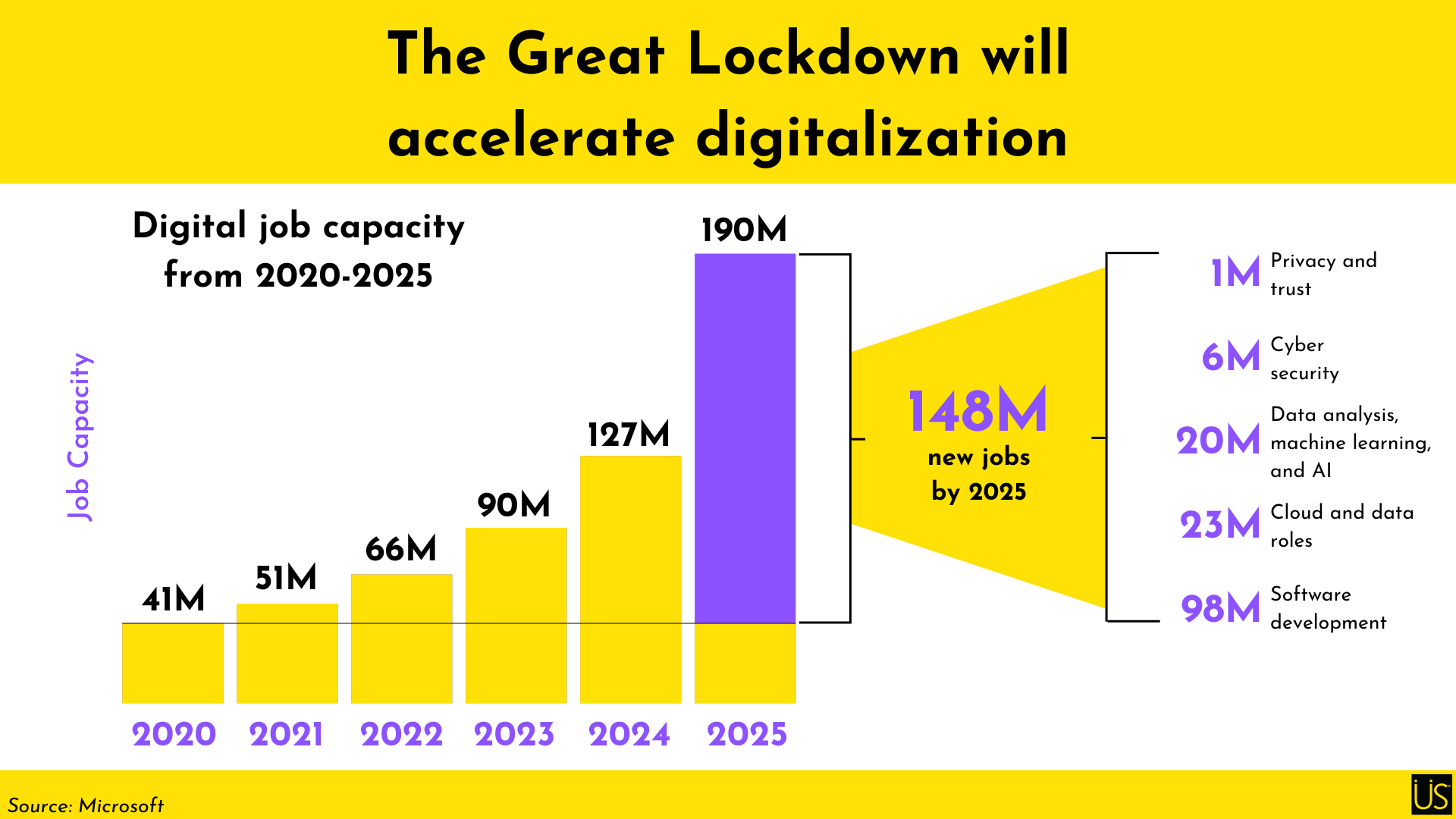
How Companies Can Shift Employee Training Online in a Pandemic World
CATEGORIES
Tags
24/7 analytics australia automation Business Process Outsourcing company Copywriting CRM customer support data data and analytics Delegate digital digital advertising digital marketing Digital Support Staff ecommerce Email Management Email Marketing Entrepreneur Freelance Writers google ads graphic design Hiring Freelancers Marketing offshore offshoring ominchannel support organizer outsource Outsourcing Philippines Project management reporting seo seo audit Shopify Small Business social media Social media experts social media management United States video Virtual Assistant Virtual Team
The current pandemic has driven many companies to adjust if they have been able to continue operating. Businesses and employees have been exiled online, and into their homes, to continue operations remotely.
These trying times have fast-forwarded digital transformation. For what some businesses achieved with a five-year timeframe and roadmap for digital transformation, while others had to do it in three months, or less, and without a plan.
Companies of different shapes and sizes had to adapt one way or another, adjust (fast), die, or wait it out (if you can). Even the likes of Ford, Tesla, and General Motors (GM). The automotive trio in the United States has transformed its manufacturing plants to produce face masks and ventilators in partnership with 3M and General Electric (GE).
Big tech like Amazon, Facebook, Google, Microsoft, and Twitter was among the first major companies to shift the workforce to Work From Home (WFH). Google and Facebook employees could be working remotely until 2021. While Twitter confirmed employees could work from home permanently.
While the transition to work from home may have been difficult at first, businesses that have successfully done it have been met with positive feedback from employees and management alike. Working from home might be here to stay long after the pandemic.
There are many benefits to working remotely. Buffer’s 2020 State of Remote Work report reveals the top five benefits of working remotely:
- The ability to have a “flex”-ible schedule
- Flexibility to work from anywhere
- Employees not having to commute
- Spending more time with the family
- Ability to work from home
According to research by McKinsey, 80% of people questioned say that they enjoy working from home. 41% find themselves to be more productive, and 28% are as productive as when working in the office.
Businesses are now more reliant on digital platforms, online productivity tools, and other digital services. The shift to working remotely is expected to continue even after the pandemic.
The Digital Skills Gap
As the lockdowns are driving more businesses and consumers to rely on digital transactions, the digital economy is expected to grow increasingly. It puts into overdrive what many calls: the fourth industrial revolution, aka Industry 4.0.
Microsoft estimates the long-term effects of the lockdowns will be felt over the next five years. Digital-related work will increase exponentially with a high focus on software development, cloud-based and data roles, and data analysis.
This upturn in digital has spotlighted the preexisting, and now ever-growing, skills gap with digital talent.
IAB UK conducted a survey before the pandemic between October and November 2019. Data shows that 88% of IAB members are faced with challenges in finding qualified candidates with up-to-date knowledge in digital.
Training and Development, Supply and Demand
The disruption of work patterns has affected many areas of businesses. Among those greatly impacted is employee training and development.
A global survey conducted by Simplilearn aimed to understand the impact the pandemic has on training and development.
The survey shows a heightened focus on digital skills development where 76% of the companies surveyed plan to increase digital skills training for employees.
The data also revealed the top five digital skills businesses find important:

- Artificial Intelligence / Machine Learning
- Cloud Computing
- Digital Marketing
- Cyber Security
- Project Management
Despite this massive shift to virtual training, many still find online training to be equally effective as in-person training or classroom training.
The increasing demand for digital skills subsequently widened the digital skills gap. Companies are expected to enhance training and development to upskill employees with the digital skills needed.
Initially, companies with existing training plans will react by going digital. This could be done by using various online platforms or learning management systems (LMS). The process of setting up online training can be painless and inexpensive if done correctly.
How to Shift to Training Online
When shifting to training online, set a mindset that this transition is not temporary. Think about the shift as long-term or permanent. Companies may decide that working remotely and distance learning is here to stay.
Plan sustainable ways to maintain training online in the long run. Improvements and iterations to the training can be made along the way. What’s important is the backbone of the training structure is in place.
Some training plans are not designed for online. For some trainers, this would be the first time to do online training. Whatever the case, there are many ways to bring the training online. Here are three to begin with.
#1 Review and Identify

Trainers need to take the time to review the existing training programs, the training goals, and expected outcomes from participants of the training. There are a few things to consider before jumping in.
Determine the best method to deliver the training
Review and break down the training into different parts. See which of these parts will be affected the most. Are there parts of the training that will be difficult when done online? Prioritize focus on those areas of your training.
Consider the best online delivery method and approach. Pre-recorded videos, video conferences, self-learning, or self-paced modules are common methods used for online training.
One of the best approaches is microlearning. The concept of microlearning is dividing large subjects, ideas, or concepts into short, bite-sized learning. An example of this are pre-recorded videos three to five minutes in length.
Most effective online programs use a combination of different methods. Using microlearning followed by video conferencing and discussions encourages more interactions.
Determining new methods of training delivery will involve transforming significant portions of your training plan. What used to be whiteboard discussions in training rooms, would now be turned into pre-recorded videos or bite-sized modules.
Identify what online training tools to use
Your online training will need a platform.
Use platforms purpose-built to make training online easier than using a combination of a lot of different tools. Consider using a Learning Management System.
Learning Management Systems (LMS) are digital tools used to perform and track online training activities. Learning materials, documents, and other training assets can be uploaded to LMS platforms.
It helps learners easily access these materials. It allows trainers to manage, organize, and track progress. Having an LMS helps centralize everything into one platform to perform online training efficiently.
There are a lot of learning systems available for use. Some, however, will require a subscription or payment so consider setting a training budget.
- Canvas by Instructure
- Easy LMS
- iSpring Learn
- Learndash
- Site Online Learning
A free online tool schools and companies use is Google Classroom. It is easy to access and provides the sharing capabilities Google is known for. Since Classroom is part of the Google Suite, it can integrate with Google Calendar, Drive, and even Meet.
Google Classroom still has limitations compared to full-on learning systems but it does the job to help bring training online.
Aside from LMS, companies can also consider online learning platforms. These are sites that allow trainers to create online courses and share them with participants.
- LinkedIn Learning
- Udemy
- Coursera
- Skillshare
It can also be a source of income. By offering it to the public with a course fee, creators can earn from trainees or students enrolled in the course.
Identify the online tool or LMS that best suits your training needs. Keep in mind that whichever platform you choose, it shouldn’t compromise the results or hinder your training expectations.
Provide the tools necessary to conduct your online training smoothly. Are your trainees familiar with the tools? If not, then incorporate training in these tools in the training plan.
Ensure that familiarity with how to use the online tools is the first thing participants will learn. It will lessen moments when trainees are figuring out what to do.
#2 Redesign the Training

Some parts of the training plan will be easy to set up in an online environment. While other parts will require a redesign. Maximize the use of online tools or learning systems to help bring all the parts of the training online.
Realize that no matter how much preparation or online tools are used, there will always be limitations to what online or virtual training can do. For example, video conferencing or pre-recorded videos may not be effective for interpersonal training.
Instructor-led training may be the best approach for particular kinds of topics. If that is the case, then instead of a redesign, make use of online communication tools to help facilitate such training.
If face-to-face training is still needed, then take the proper steps to facilitate such training.
- Make sure the venue is compliant with safety protocols and social distancing.
- Set a time and date that’s convenient for participants.
- Keep participants informed about safety measures and any requirements they will have to comply with (e.g. wearing a face mask).
Online training requires more interactions to keep participants engaged. Be sure to incorporate more interactive activities that will require trainee participation or submission of output.
#3 Execute then Adapt

No matter how much planning has been done, chances are there will be holes in the training plan. This should be seen as an opportunity to adapt and find new ways to transform the training.
Run a test flight with the new training plan. Do it with managers or colleagues if possible. It can also be done with a smaller number of participants than you would normally train.
Here are three pointers to remember when conducting online training.
Information. Keep your participants in the know.
Keep participants informed of every step of the training process.
Early on, make sure to lay down the agenda and the course outline. Inform about the next steps of the training. Share expected outcomes and key learnings participants will gain from the training.
Give public access to documents containing course outlines. If no such document exists, make sure to have one. Also, provide access to training materials you are allowed to share with participants.
Show participants a clear pathway to the training. A lack of information and transparency could lead to confusion. Those who are unsure where the training is headed could potentially lose interest altogether.
Communication. Make it loud and clear… and visual
Online training needs to be concise and direct to the point.
Giving instructions should be delivered clearly when done online. As a thought experiment: think about how you would give instructions once without repeating them.
Use visual aids or presentations to help communicate ideas, give instructions, or make announcements.
Communicate the rules. Let participants know when they are required to take action, or what kind of action is expected. Even simple things like when to mute or unmute their microphone.
Encourage participants to turn on video and webcam. It helps maintain and even boost the social aspect of the training between those involved.
Utilize available communication tools to engage and motivate participants. Motivating participants helps keep the training environment active. It is especially important if the training includes self-paced learning.
Interaction. Interact with initiative.
Doing online training requires more interactions, even more so than physical classroom environments.
Engagement between those involved is needed to keep the training active and lively. Have more question-and-answer sessions. Actively ask questions or direct questions to participants. Don’t always expect a raise of a hand.
Have training activities that will spark conversations and interactions between participants. It strengthens the connection among trainees despite the distance or virtual setup. Trainers will need to exhibit a stronger drive to motivate the participants in the training.
Benefits and Drawbacks of Online Training
There are many benefits to doing training online. It can provide a level of flexibility and accessibility that conventional training lacks. Here are a few of the benefits of online training.
Flexibility
Online training needs to be short and on point. By using a variety of online training methods, like pre-recorded videos and microlearning sessions, participants can learn a lot in a short period.
It allows more flexibility for participants. This is especially true if your training involves self-paced learning. Many prefer this method of training to save time and be able to focus on other important activities or even other aspects of their lives.
Accessibility
Training online allows participants to easily access training materials. Downloadable PDF guides can be shared with trainees. Video transcripts can be viewed to help with note-taking. Presentations and pre-recorded videos can be replayed. Even recordings of webinars can be made available.
By having a platform for learning, participants can also expand their network and connect. It retains the social aspect of learning as seen in classroom environments.
Having the training online can also open the opportunity to invite experts or industry leaders from around the world. Guest speakers can present in your training without thinking about travel arrangements or accommodations. Set a schedule and settle time zone differences, then have a video conference with all your participants.
Reduced Cost
Online training saves a lot of money for both parties: the trainer and the trainee. Money and time spent commuting to training venues are essentially non-existent.
Being able to participate in training online provides safety and security for all participants, especially during these times. Additionally, no expense is required if your past training used to be done externally or at outside venues.
The money saved could be used to invest in learning management systems to maximize the online training experience.
Online training also has limitations. The most significant drawback is the limited social interactions among participants. The human element that makes learning meaningful is difficult to achieve online. This is where many training programs struggle.
Less Social Interactions
Arguably one of the biggest drawbacks of online training is the limited face-to-face interactions or real social connections.
A New York Times opinion piece by Professor Mark Edmundson from 2012 describes the problem with online learning. Why social and face-to-face interactions between teachers and students are an important part of the learning process.

Professor Mark added that the best instructors have an acquired ability in reading their audiences. Instructors can sense the mood of the crowd and know when participants are engaged or are losing interest.
This is particularly important for performance-based training. Trainers need to assess each participant’s capability. From theory to practice and actual application of what was learned.
In a virtual training environment, trainers are limited in achieving this same level of mindfulness of their participants.
Isolated Learning
The common ways of doing online learning are methods where self-learning is intensive. Pre-recorded videos, micro-learning sessions, or self-paced modules. Methods that require determination and the mental drive by individuals to get the most out of learning.
Some participants may lack the motivation, self-discipline, or desire to learn. This was apparent even in face-to-face learning. But what usually drives motivation in a physical learning environment is the social aspect and the inclusiveness among all learners.
This inclusiveness is a challenge to achieve online. This is why online training needs a heavy amount of interaction and communication with participants. Training should have activities that encourage social belongingness online.
Allow learners to connect. Consider available social networking sites, and personalized emails, or encourage open discussions to strengthen the social aspect of online learning.
Online Training a New Normal?

Online training is here to stay. The extent to which much of it will be adapted in the future remains to be seen. Industries can collectively decide that online training or online learning is the way to go, even after the pandemic.
The plausible outcome for the future of learning and training is blended learning or a hybrid model. The current crisis led to an online-learning experiment that could lead to a new model of learning.
Blended or hybrid learning combines the best methods of in-person training with online learning tools and techniques. It provides learners with the accessibility of online learning, while also maintaining the strengths of in-person learning: the social aspect and interactions.
When done correctly, this model also allows flexibility for instructors and participants to transition from online learning to in-person learning when needed.
There will be a shift in the teaching and learning processes alike. Take the case of the education sector for example. Educators will need to ponder if a four-year model for higher education is still necessary or if the time spent in classrooms, and schools, will need to be reduced.
Lectures that focus on theory and require less interaction between instructors can turn into pre-recorded videos. The conventional teaching and learning methods cannot simply be ‘uploaded’ online.
If a hybrid model is to be implemented the current education system as we know it will change. Just like how training programs need to be redesigned for online training.
Digital Skills Training

The pandemic has driven many companies to go online. To survive, businesses have shifted focus to online channels like digital advertising, online selling or eCommerce, and social media marketing. This massive shift increases the demand for digital skills.
Businesses determined to improve training and development programs can conduct digital skills training internally or externally through online courses or with the help of training consultants.
Building the training internally gives trainers control over the program. This approach is useful if managers already have a clear set of expectations post-training. Having control over the training is also helpful if the topic covered is highly specialized.
On the other hand, managers can rely on online training courses or refer to training consultants. Getting external help saves time and effort in building or improving training programs.
Many available online courses already offer the digital skills training required by most companies. For specialized training, businesses can get the help of training consultants to build programs and determine the best methods of training.
CV19 has affected many aspects of life: education, learning, businesses, and the way work. It is how we adapt and cope with these changes to get past uncertainty and find opportunities for growth and development.




